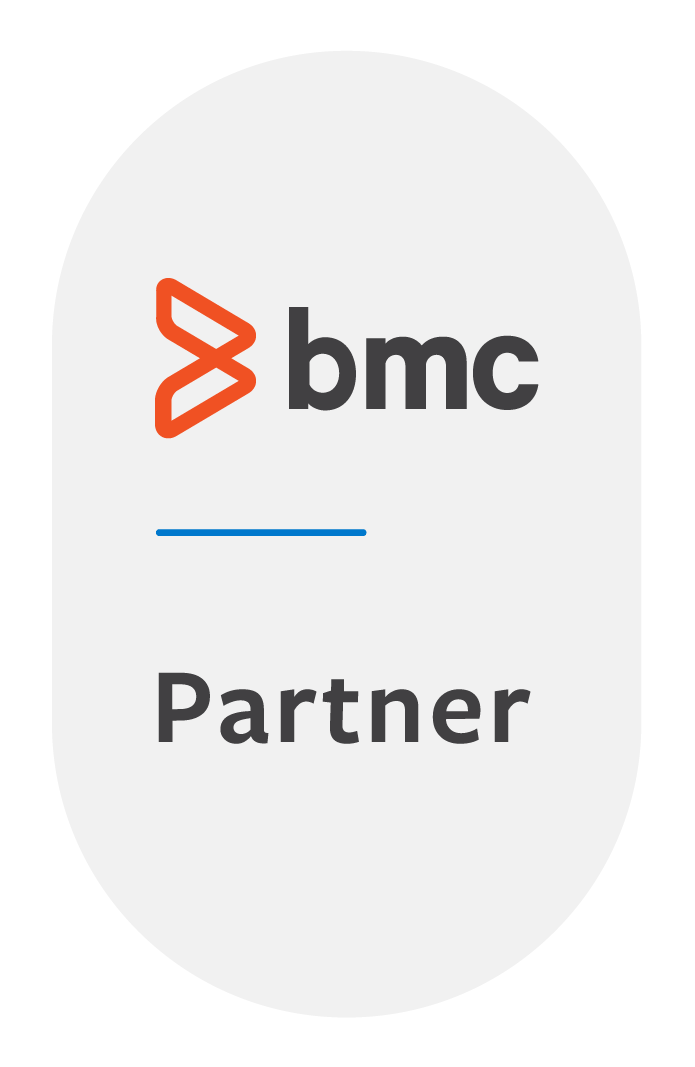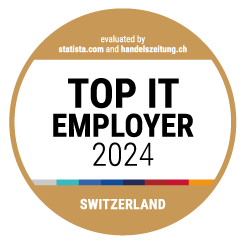Artificial intelligence (AI) is still unknown territory for many companies, but is slowly finding its way into IT departments. We show where AI is already being used in practice and can offer real added value to IT service management. As a ServiceNow Premier Partner and BMC Software Professional Partner in Switzerland, we also take a look at the AI solutions offered by ServiceNow and BMC Software.
Why is AI in ITSM so exciting?
The use of artificial intelligence as technical support for companies was already named as one of the most important digital trends by Gartner in 2018. Interest in AI has continued to grow since then, as confirmed by FROX’s IT Service Management Switzerland Report 2021 (German only). 70% of survey participants fundamentally see a benefit of AI in ITSM. With the help of artificial intelligence, more can be achieved in IT with existing resources and, among other things, time loss and expenses can be minimized.
It must be noted that artificial intelligence in IT is not aimed at cutting jobs and replacing employees, but rather at increasing efficiency. Tedious, repetitive tasks can be handled by smart AI mechanisms so that employees can focus on more productive work that requires creativity, value judgments, foresight, and strategic thinking, which cannot be achieved through technical tools. Currently, there are no ITSM solutions that can process and solve complex support requests completely autonomously with algorithms; they act in a supporting and analyzing capacity, but not yet in a self-executing capacity. It remains to be seen to what extent this will change in the future.
Areas of application: What can artificial intelligence do in IT service management?
According to ComputerWeekly, there are currently four categories of AI tools that are compatible with ITSM platforms: reactive, proactive, predictive and autonomous.
- Reactive ITSM tools can respond to set triggers and then take action on their own. Well-known examples are chatbots and virtual assistants.
- Proactive ITSM tools are designed to detect problems early and address them by taking effective action before damage can occur. Robotic Process Automation (RPA) falls into this category.
- Predictive ITSM tools are tasked with analyzing past and current data to make predictive forecasts regarding performance, demand or necessary work by the IT department. Machine learning plays a big role here.
- Autonomous ITSM tools are not yet market-ready, AI-enabled tools that make value judgments and more complex risk-benefit trade-offs independent of their program of origin.
Today, there are uses for AI in ITSM in a wide variety of areas.
- Service desk: Tedious and undemanding routine tasks can easily be pre-processed by artificial intelligence. Chatbots are already being used successfully in many companies. They serve as the first point of contact for inquiries, forward them to the responsible specialist, answer questions, process the problem and suggest self-service solutions. Their purpose is to improve accessibility, relieve the service desk, and make multi-channel support available.
- Problem management: by continuously analyzing large amounts of data, AI tools can quickly identify and solve emerging trouble spots. They compare old cases and patterns with new data to identify inconsistencies. This can not only prevent problems internally, but also protect against external fraud attempts and identity theft.
- User experience: Customer experience is improved through increased support. But the user experience of employees can also be more positive if AI is used to analyze existing workflows, identify optimization potential, and categorize and prioritize tasks accordingly.
- Incident management: In the case of simpler incidents, artificial intelligence can already solve them completely without human intervention. This includes, for example, pattern recognition for IT tickets and support for resetting passwords or blocking accounts. Around half of all tickets can already be processed automatically in this way.
Artificial Intelligence at ServiceNow: Now Intelligence for AI-powered self-service, predictive analytics and better decision making.
With Now Intelligence, ServiceNow provides a solution based on the ServiceNow platform that helps organizations work smarter, more efficiently, and make better business decisions. To do this, ServiceNow provides capabilities to discover information, make predictions, and automate routine tasks.
- Work faster and smarter: Find answers to questions quickly and get help from chatbots powered by machine learning and always-on virtual agents. With the help of conversational AI, ensure employees and customers have access to the resources they need, when they need them, and use better self-service.
- Predict problems and automate tasks: Get valuable insights with AI-based analytics to identify incidents and then manage and resolve them efficiently. Automate routine tasks and increase employee productivity by freeing them from repetitive work.
- Make better decisions and optimize intelligently: Leverage the power of artificial intelligence and insightful analytics to uncover areas for improvement, predict trends, and plan and prioritize resources. Customizable dashboards, visualized KPIs, and metrics help you drive transparency and establish strong performance management.
BMC Helix ITSM: AI-powered predictive IT Service Management
BMC Software offers best-in-class solutions that leverage artificial intelligence and machine learning to bring you many benefits in IT service management. With BMC Helix ITSM, you have automated, AI-based service management capabilities that enable more accurate, efficient service delivery and innovation.
- Add value, drive innovation, reduce costs, and increase efficiency: BMC Helix ITSM helps you quickly achieve desired business outcomes, reduce operational risk, modernize the user experience, and drive innovation with agile service management.
- Automate and evolve IT: Drive agile service management to deliver service innovation with advanced analytics and optimization. To do this, pull data from disparate infrastructure sources that form the basis of service models; streamline change request creation, approval, and implementation using change automation; and leverage automated suggestions on templates, knowledge articles, and actions to resolve issues faster.
- Promote smooth operations in multi-cloud deployments: To seamlessly add or update services while minimizing downtime and increasing productivity, BMC Helix ITSM helps you reduce costs by deploying and managing multiple clouds, scale resources, and mediate incidents, changes, and releases between multiple cloud providers.
- Deploy services faster and optimize user experiences: Help your service desk staff do their jobs and improve service processes and the user experience. You can do this with features that help you improve user satisfaction and employee productivity.
Introducing AI in the enterprise: Here’s what you should pay attention to during implementation
Artificial intelligence cannot and should not replace employees, but rather support and relieve them in their everyday work. Nevertheless, there are critical voices that have mixed feelings about the implementation of AI, as they fear job losses. It is therefore important to address such concerns directly and introduce employees to the new technology with caution and clarifying training.
Before artificial intelligence is introduced in the company, an intensive analysis should be made and a decision made as to whether or not AI makes sense in one’s own company as a technology add-on in IT service management. Ask yourself why AI-enabled tools are being introduced and what the benefits should be and what the expected profit from this investment should be. If you can reliably answer these questions, it may make sense to implement AI in the enterprise.
Once the goals for implementing AI are clearly defined, the next step is to evaluate the competencies of the employees. The new workflows, such as the use and maintenance of AI technology, require expertise that necessitates internal training. Only with a solid knowledge base and an up-to-date process design can companies fully exploit the potential of artificial intelligence. Create the right basis for this and remove obstacles before you start implementing artificial intelligence.











